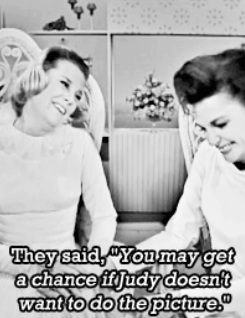Judy by the Numbers: "Country Medley"
 Wednesday, November 2, 2016 at 8:23AM
Wednesday, November 2, 2016 at 8:23AM Anne Marie has been chronicling Judy Garland's career chronologically through musical numbers...
Despite the upheaval caused by firing most of the crew only a few weeks before, change was slow to come to The Judy Garland Show. Producer Norman Jewison made incremental changes, first giving writers free reign to make jokes about Judy, then bumping up the presence of guests and side acts, before eventually dialing them back. This show was one of the last to feature Jerry Van Dyke, Dick Van Dyke's younger brother who had acted as comic relief for the first few episodes but was critically panned for poking fun at Garland. Already a third of the way through its eventual 26 episodes, The Judy Garland Show was still very much a work in progress.
The Show: The Judy Garland Show Episode 8
The Songwriters: Various, arranged by Mel Torme
The Cast: Judy Garland, Jerry Van Dyke, George Maharis, The Dillards, directed by Bill Hobin
The Story: All of this experimentation meant strange and wonderful things appeared on the show. For instance, who would look at Judy Garland's career and think, "needs more bluegrass?" Yet, the eighth episode guest stars were bluegrass group The Dillards, best known for their recurring role as The Darlings on The Andy Griffith Show. While this episode heavily featured The Dillards playing on their own, Judy and the rest of the cast joined them for a large production number near the end of the show which blended - sometimes well, sometimes uneasily - bluegrass, big band, jazz, and folk music. No matter how many changes were pushed through, The Judy Garland Show was never dull.
 Judy Garland,
Judy Garland,  Judy by the Numbers,
Judy by the Numbers,  TV,
TV,  musicals
musicals 


